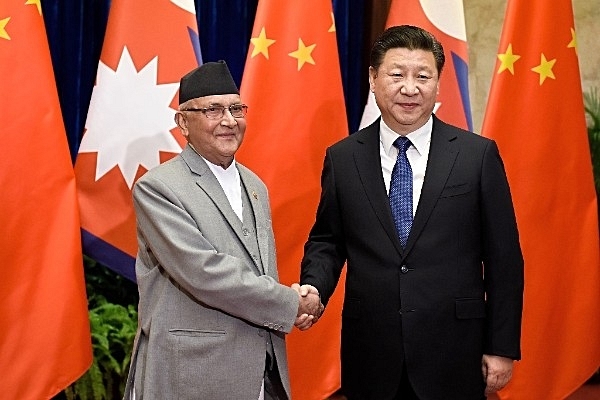Insta
India Loses Monopoly Over Nepal’s Transit After China Allows Access To Its Land And Seaports

Chinese President Xi Jinping (R) shakes hands with Nepal Prime Minister Khadga Prasad Sharma Oli (L) (Etienne Oliveau/Getty Images)
In an unprecedented move from China, India lost its monopoly over Nepal trade and transit as China allowed the landlocked neighbour to access four of its seaports and three land ports, reports Press Trust of India.
China allowed access to Shenzen, Lianyungang, Zhanjiang and Tianjin, the latter being the nearest seaport at a distance of around 3,300 km from the Nepalese border, according to foreign ministry sources.
This move is reported to provide Nepal with alternative routes to engage in international trade.
As per the new arrangement, Chinese authorities will provide permits to trucks and containers ferrying Nepal-bound cargo to and from Xigatse in Tibet.
Nepal, which had been er relying on Indian ports, can now diversify its access to seaports and alternative routes for third-country trade.
Traders may avail any mode of transport - rail or road to access to seaports for third-country trade, said Ravi Shanker Sainju, the joint secretary at the ministry of industry, commerce and supplies.
He led the Nepalese delegation during talks at the meeting of Nepalese and Chinese authorities on Wednesday (5 September) and Thursday (6 September) for the finalisation of the protocol of Transit and Transport Agreement (TTA) with China.
The Transit and Transport Agreement with China, signed in March 2016 during Prime Minister K P Sharma Oli's China visit, will come into force once the protocol is exchanged, officials said. Madhesi agitation in 2015 had forced Nepal to explore trade links with China and reduce its long-term dependence on India.
Support Swarajya's 50 Ground Reports Project & Sponsor A Story
Every general election Swarajya does a 50 ground reports project.
Aimed only at serious readers and those who appreciate the nuances of political undercurrents, the project provides a sense of India's electoral landscape. As you know, these reports are produced after considerable investment of travel, time and effort on the ground.
This time too we've kicked off the project in style and have covered over 30 constituencies already. If you're someone who appreciates such work and have enjoyed our coverage please consider sponsoring a ground report for just Rs 2999 to Rs 19,999 - it goes a long way in helping us produce more quality reportage.
You can also back this project by becoming a subscriber for as little as Rs 999 - so do click on this links and choose a plan that suits you and back us.
Click below to contribute.
Latest